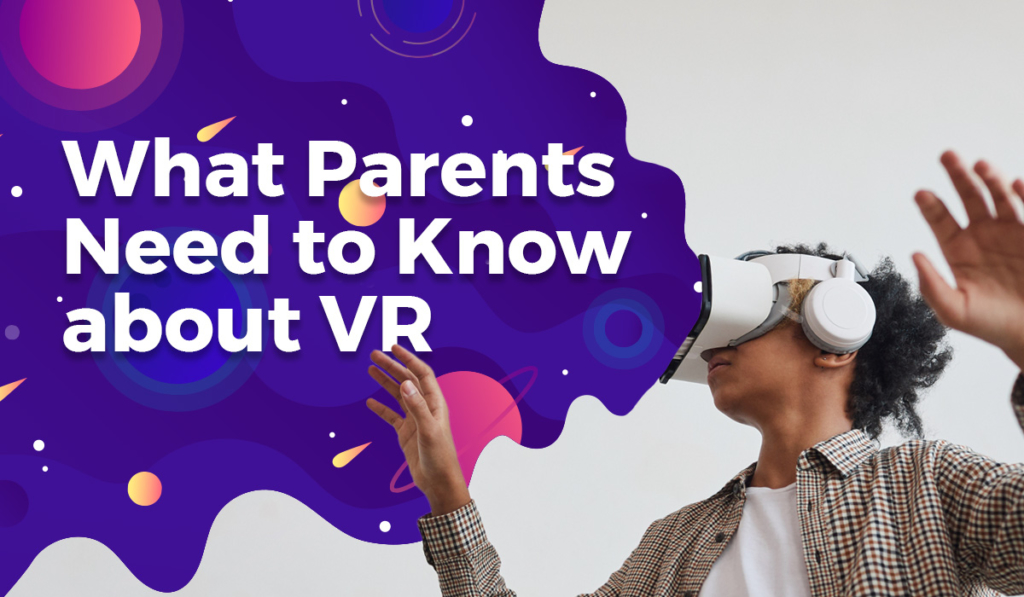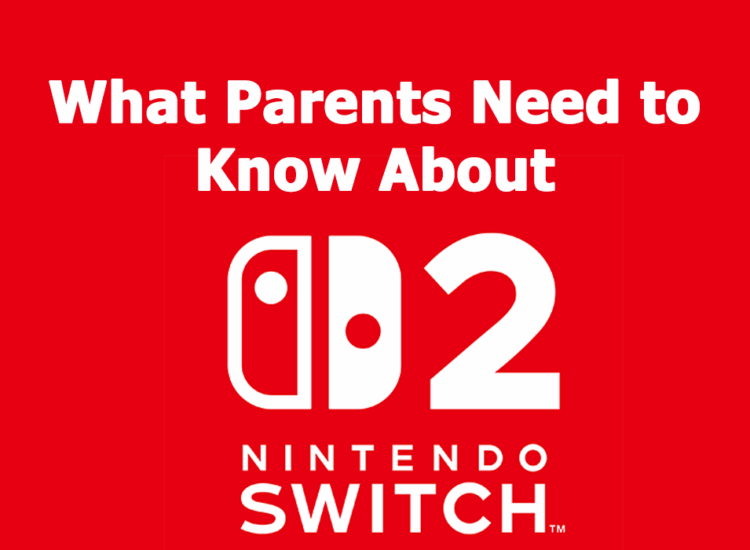What Parents Need to Know About VR

Originally published on May 19, 2022. Updated to include current information about VR headsets, pricing, technology, and more.
Over the years VR has gone from a science fiction pipedream to a household staple for millions of families. Like with any emerging technology, parents and caregivers will want to know more about how they can keep VR appropriate for their kids. ESRB is here to help!
What is VR?
Let’s start with the basics. For many, VR can conjure images of the Holodeck from Star Trek. While that sounds great, we’re not quite there yet. VR currently comes in a few forms, all of which are centered around a headset that is strapped to the users’ face. There are two main types of headsets: Tethered and untethered.
Tethered headsets include devices like the newly released PlayStation VR2 (better known as the PS VR2) and its predecessor the PS VR. These devices must be plugged into an external source, which runs the actual video game. For example, the PS VR2 must be plugged into a PlayStation 5.
The most popular examples of untethered headsets are the Meta Quest 2 and Meta Quest Pro. Unlike its tethered cousins, these are totally self-contained and run games and apps directly from the device. It’s worth noting that most untethered headsets now have the ability to plug into a computer, opening the door to more games with a higher visual quality (depending upon how beefy your PC is). Note that the Meta Quest Pro is targeted at the business and professional market, rather than the average consumer seeking entertainment options.
Is VR Appropriate for Kids?
Deciding if a VR game or experience is appropriate for your kids is very similar to how you may decide about traditional video games. The big difference here is perspective. Even compared to first
Visuals are only one part of this consideration though. The evolution of “3D audio” aims to mirror how sound would react in the real world depending upon the position of the player’s head. Some headsets like the PS VR2 – also include “haptics” in the headset. This allows for little vibrations or pulses that further immerse the player. Even the controllers have haptics included, making for semi-realistic interactions with in-game environments.
Your tried-and-true strategies for picking appropriate games will likely remain unchanged. It’s always a good idea to start by checking the ratings, and the good news is ESRB assigns age and content ratings to many VR games, including everything available for download on the PlayStation Store and for the Meta Quest.
Beyond that, it will be especially helpful to check gameplay videos on websites like YouTube or Twitch. Doing so will help you better understand how the experience presents to a user and make sure the content and perspective is appropriate for your kids.
All that being said, manufacturers often note that VR headsets are recommended for kids 13 and up.
Online Play in VR
Many games allow users to cooperate, compete, and communicate via online play, and VR is no different. There are some popular games, like Rec Room (Everyone 10+), that allow users to create in-game avatars and interact with others in virtual spaces. This adds another dimension to online play; in addition to voice and/or text players now have a visual, in-game representation of their own body. Note that this is not an exact one-to-one look-alike, but it definitely adds another layer of interactivity and personalization to online video games.
Your tried-and-true strategies for picking appropriate games will likely remain unchanged.
Online play can add a wonderful, innovative layer to games, where users can “exist” in the same space and share experiences, no matter where in the world they are. Like with traditional online video games, it’s still important to keep in mind that not everyone wants to communicate in the same way. Most people play online to have a good time with their friends, but if your kids ever encounter someone behaving inappropriately make sure they know how to mute, block, and/or report the individual.
Keeping VR Experiences Safe and Fun
Virtually all video game consoles have parental controls to help parents and caregivers manage what their kids play, with whom, for how long, and whether money can be spent on new games or in-game purchases. VR is not much different. For example, the PS VR and PS VR2 have parental controls linked to your PlayStation console, allowing you to manage those experiences in the same way you would manage your kid’s traditional video games on the platform.
Meta offers parental supervision tools for the Quest and Quest 2. These are somewhat less comprehensive than other game device parental controls and are more focused on allowing you to
monitor your kids’ VR activity. That said, they are a great step to staying involved with your kids’ video games.
ESRB offers free step-by-step parental controls guides to help make it easier for parents and caregivers to set up these tools. You can find those at ParentalTools.org. For more tips about how you can manage your kids’ video game experiences visit our Family Gaming Guide.
VR Tips
With any new technology there are new intricacies to learn. Here are some additional tips to help you and your family have a great time with your new VR headset:
- Cost May Vary – Some VR headsets cost $399 and others can sell for more than to $1,000. In fact, VR hits just about every price-point in between! Make sure you know what you’re getting, and if you’re looking into a tethered headset double check that you have a PC that is powerful enough or a compatible console.
- Make Some Space – You may recall the many TVs lost to Wiimote accidents; it’s funny to watch but not so funny if it happens in your home. Make sure you set up a dedicated space for VR to prevent any collateral damage! Part of this is also making sure people are not walking into the radius of a pair of wildly flailing arms. VR controllers also come with straps to attach to your wrists, so that may be a new Household Rule to establish.
- Take Breaks – I’m not prone to motion sickness, but there have been times when playing in VR when I find that I get a bit queasy and need to take a break. Meanwhile, my wife gets motion sick walking from the kitchen to the couch, and she’s had wonderful, stable VR experiences. It’s different for everyone, but make sure you and your kids take breaks, drink water, and monitor your reaction to VR experiences, especially as you start out and get used to the technology. Some of this has to do with certain aspects of a game, so while one game may make you feel like you need a 30-year-nap, others will be just fine! To better approach this some storefronts – like the Meta Quest Store – have “comfort ratings”.
- Have Fun! – Video games are a great way to share some quality time with your family. Even in VR, there are myriad games – like Keep Talking and Nobody Explodes (Everyone 10+) – that can be played together. Not only will you have a good time, but you’ll better understand why your kids love video games and how you can create appropriate video game experiences.



